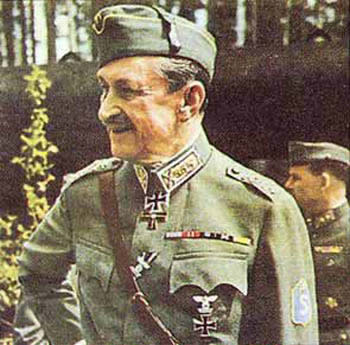Death Taught the Red Army How to Win
The War Illustrated, Volume 2, No. 31, Page 325, April 5, 1940.
So great were the Red Army’s reserves at the beginning of the Finnish war that in some quarters they were hailed as proof of deep-seated inefficiency. This may as may be, but it is certain that the Russians learnt to profit by their mistakes.
There was a great difference between the Red Army which, with bands blaring, crossed the Finnish frontier on November 30th, 1939, and that which 104 days later marched across the battered ruins of the Mannerheim Line into Viipuri.
At the outset of the struggle the invaders were blown out with confidence. They expected a walk-over, and the political commissars who cheered them on with their ideological preachings assured them that the victory was as good as won. Their equipment was first class quality and lavish in the extreme. Their tanks were counted by the thousand, and so, too, were their warplanes; their own numbers were as the sands of the seashore. They seem to have blundered into action with no real plan, and certainly with no clear realization of what they were up against. Their High Command displayed an almost touching belief in the capability of tanks to win battles by themselves; they sent them to charge concrete was and pillboxes; and they must have been amazed to find that they were so easily put out of action by anti-tanks guns, hand grenades, and even well-aimed bottles of petrol, so that out of the 3,000 tanks which the Reds sent into action it was estimated that nearly half were captured or destroyed.
The shooting of the Russian artillery was erratic, and their lack of understanding in the siting and employment of their guns would have shocked a Woolwich cadet. Even in the air, where they had an almost unchallenged superiority, they used their ‘planes in such a way that about one third of them-nearly 600- were shot down by the Finnish anti-aircraft guns.
But in war there is no teacher to be compared with Death. And when the news of great heaps of Russian dead pile up in the snowdrifts at Suomussalmi and Aglajarva penetrated to the Soviet chiefs in Lenningrad and Moscow, very soon was worked a change. The command was reorganised; the political commissars were forced to take second place to the front0line fighters; and henceforth the officers were encouraged to rely more on their own experience than on what textbooks told them. There were changes too, in the personnel, and the shaggy, unenthusiastic conscripts-many of whom were drawn from the Ukraine or Turkestan, where snow is seldom seen-were replaced by Siberian levies who were thoroughly acclimatized to the Artic conditions.
Towards the end of January it began to be obvious that the Reds were profiting by their bitter and bloody experiences of the past few weeks. Artillery and tanks, planes and infantry were combined in one offensive, and not used separately as so frequently heretofore. From the first week of February the Mannerheim Line was exposed to a continuous and well directed assault. The early attacks were driven off with heavy loss, but undeterred the Russians still came on, while the Finnish Command were forced to keep in the line men who were more than due for a rest. The artillery bombardments were greater than anything that had been seen in Europe since the huge artillery battles of the Great War; on February 13th, for instance, the Russians were reported to have put down 300,000 shells.
Red Avalanche of Men and Metal
In the fighting in the eastern sectors the Russians with tanks and heavy artillery attempted to come to grips with an enemy whose native mobility was enhanced by skies, but now they had a stationary target, and they plastered it day in day out with heavy shells. Deep down in their bottle-shaped forts of reinforced concrete, the Finns beat back assault after assault, but in the course of the fighting many of the pillboxes sustained direct hits, and although the shells did not penetrate their roofs the concussion was sufficient to affect the accuracy of the defenders shooting. Worse still from the Finnish point of view was the fact that to a man their troops were wearied almost to death, and on more than one occasion the Russians bayoneted the Finnish infantry who had dropped down in their trenches from sheer fatigue.
After days of constant probing the attackers discovered at last a weak point at Summa. They flung troops into the breach without any regard for human life-in one day it was reported that the Russian killed numbered between 30,000 and 40,000-and against this avalanche of flesh and blood the Finns could oppose only men who had already been engaged in heavy fighting for weeks on end. It so happened that when the strongest attack was launched the Finnish lines were manned by volunteers who were relieving the crack troops who were the normal garrison. The assault was pressed home with terrific vigour, and very shortly the Finns were obliged to abandon the whole western sector of their defences in the Karelian Isthmus.
So it was that at length the new men and new methods of the Russians closed the chapter of defeat and disaster, and after 104 days of war’s fury the trumpets sounded for the Red Army’s victory.
Index
Previous article
Jottings from My Wartime Diary
How true is the saying that all good things have "the defects of their qualities!" To have many good friends is a thing to delight in and also a thing that must bring sorrow. My long and richly intere
Next article
The War May Cost Ten Millions a Day
Here we have a chapter on the financial aspect of the war-on the all-important subject of how it is being paid for, or will be paid for in the future. Written by E. Royston Pike of The War Illustrated





